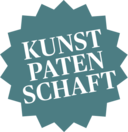Helm: Capacete
um 1490, Owner: König Ferdinand II. Sohn des Johann II. von Aragon
Capacete
The term capacete derives from the Spanish cabeza, head. It is used for a Spanish version of the iron kettle hat common throughout Europe in the late Middle Ages. Typical characteristics are the wide brim, the marked cortex line, and the elegantly curved silhouette. Note the three blacksmith’s marks (half suns) on the side of this capacete. These and similar marks are traditionally associated with the Spanish city of Calatayud, located south-west of Saragossa. Although we cannot prove this attribution, the ornamentation suggests the helmet originated in Spain.
Note also the small gilt cross on the repoussé, slightly tilted tip of the helmet, and the engraved inscription in hoc signo vincit (‘in this sign he is victorious’) on the narrow gilt copper headband, the individual letters alternating with abstract leaves. The decorative border along the rim features only garlands. On forehead and back, the decorative bands are surmounted with crowned cartouches emblazoned with the arms of Granada. In addition, the frontal cartouche includes a cross (today incomplete). The small sleeve (presumably for a plume) mounted on the headband on the back of the helmet is a later addition.
Until the twentieth century, the helmet was not attributed to a particular owner; however, its decoration suggests that it may have belonged to Ferdinand the Catholic, King of Aragon. It references the conquest of Granada, Ferdinand’s great victory in 1492.
Object data
Object Name
Helm
Culture
Spanisch
Dated
um 1490
Owner
König Ferdinand II. Sohn des Johann II. von Aragon (1452 - 1516) - GND
Material
Eisen, geschmiedet, getrieben. Dekorband.: Kupfer, feuervergoldet, teilweise graviert. Nietkappen, Kreuz: Messing. Wappen: Kupfer gegossen, feuervergoldet.
Dimensions
H 27,5 cm x B 25 cm x T 32,5 cm
Inscribed
"in hoc signo vincit"
Markings
unbekanntes Plattnerzeichen: 3 mal roh eingeschlagen (gestürzter Halbreis mit drei Strahlen)
Image rights
Kunsthistorisches Museum Wien, Hofjagd- und Rüstkammer
Inv. No.
Hofjagd- und Rüstkammer, A 645
Permalink (citable Link) to this page: www.khm.at/it/object/373066/

